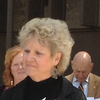I don't know if you have noticed, but an increasing number of Common Application Supplements either request or offer applicants the opportunity to submit a resume. For example, the Carnegie Mellon Supplement says simply, "Optional One Page Resume; File should be under 500 KB;" while Santa Clara and Vanderbilt's both say, "If you wish to submit your resume, you may upload it here."
I know, I know; many people say that resumes for high school students are a waste of time. They are wrong. The way I have students use them, activities resumes are a critical part of the admissions process. Let me tell you how and why.
DEFINITION OF ACTIVITIES RESUME
An activities resume is a one to four-page written picture of your academic, extracurricular, sports and other interests and involvements that focuses on high school years, but also ties in long-term interests and activities that may go back to when you were a young child.
GETTING TO KNOW YOU, GETTING TO KNOW ALL ABOUT YOU
After test scores and grades, admissions officers look for how students spend their time, including the quality, depth and length of involvement. Developing a resume is not only a way to provide colleges with information about who you are as a student and person, but also a way for you to get to know yourself better.
As students gather information about activities they have engaged in over the years, they often gain a new perspective of how interesting and "one of a kind" they really are. Seeing everything you have done written down is altogether different from having faint memories of past activities (or no memory of them at all). As you look over your resume, different themes and patterns of interest often pop out. Sometimes you realize that what you are doing now is connected to something you did a number of years ago. These insights are very useful for you to have and admissions people to know about.
YOUR CHOICE OF ACTIVITIES
Many students think that the more activities they have on their resume, the more desirable they will be as an admissions candidate. This is a myth! In fact, colleges prefer students who are deeply involved in a few activities that demonstrate some uncommon leadership, accomplishment or talent. Colleges want a well-rounded student body, not necessarily a well-rounded student.
adMISSION POSSIBLE TIP
In a resume, you don't have to focus just on school activities; identify everything you do, including what interests you, what talents you have, what turns you on and how you spend your time. The content of your activities doesn't really matter, although it won't hurt if one of your activities is considered "unusual" or different (e.g., you have chosen fencing as a sport, are an expert in making goat cheese or are fluent in a Middle Eastern language or play an unusual instrument or raise snakes as a hobby).
WHY PUT TOGETHER A RESUME
Having a well-thought out activities resume will make completing college applications ever so much easier. To begin with, a resume helps organize the many different pieces of information you need for various parts of college apps, including the Common, Universal and stand-alone apps. Second, a resume enhances your ability to find a theme or focus for your applications, which in turn will help you come up with good topics and content for the application essays. Finally, filling out application Honors and Activities grids is a snap when you can work off a well-done resume.
HOW TO USE A RESUME
You can't believe all the uses there are for a resume. Here are a few:
- High school counselors, teachers and others have dozens of recommendations to write. Anything you can do to make their jobs easier--as in providing an activities resume--will be greatly appreciated. The truth is that offering a well organized, easy-to-read, comprehensive resume can only have a positive effect on what recommenders say on their recommendation forms and letters.
Once in college, students often continue using their resumes, updated of course, for whatever they might apply for during their four years as an undergraduate.
A model for and sample resumes can be found here:
FINAL THOUGHT
Many students feel uncomfortable writing or talking about themselves for fear of being seen as a show off. While the instinct for not coming across as a braggart is right-on, students need to have a means for conveying how they spend time in and out of school. An activities resume is a great tool for doing that.
SPECIAL ADVICE FOR PARENTS
High school students are not very familiar with adult tools such as resumes, so this is part of college admissions where you can be of real assistance. Starting in the 9th grade and continuing through to 12th, remind your teen or record yourself everything he or she does, experiences, accomplishes or wins. During the 11th grade, offer to show your child how to put a resume together. Finally, make sure your high schooler has a finished activities resume by the beginning of first semester, senior year.

